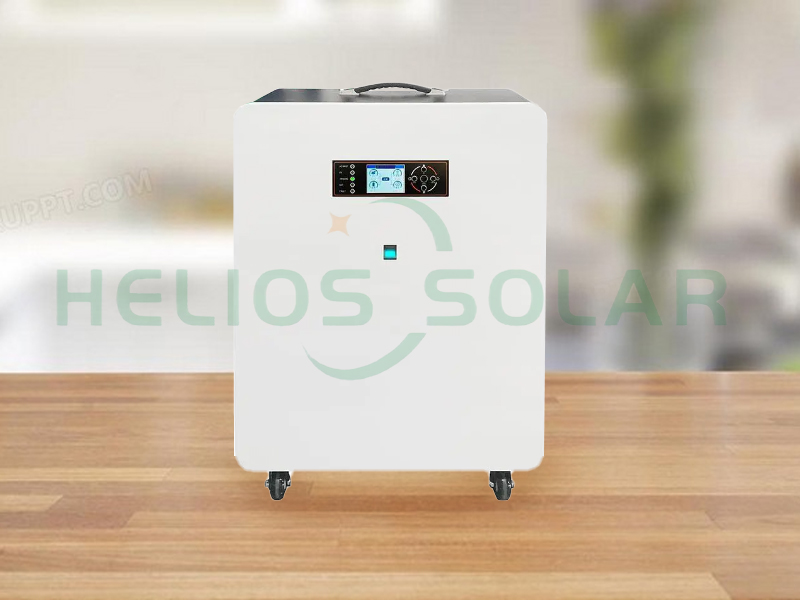In the rapidly developing technology field, the integration of various systems has become the focus of innovation. One such advancement is the optical storage lithium battery all-in-one device, a device that combines optical storage technology with the benefits of lithium battery systems. This integration not only improves performance but also opens up countless applications in various fields. In this article, we will explore the applications of optical storage lithium battery integrated machines and their potential impact on the industry.
Applications in consumer electronics
One of the most prominent applications of optical storage lithium battery integrated machines is in the field of consumer electronics. Devices such as smartphones, tablets, and laptops can benefit greatly from this integration. Optical storage components can store large amounts of data, such as high-definition videos and applications, while lithium batteries ensure these devices stay powered for long periods of time.
Additionally, as demand for portable devices continues to grow, the need for efficient energy management becomes critical. The all-in-one computer optimizes power consumption, allowing the device to run longer on a single charge. This is especially beneficial for users who rely on their devices for work or entertainment.
Impact on renewable energy systems
The integration of optical storage and lithium battery technologies also has a significant impact on renewable energy systems. As the world shifts to sustainable energy, the need for efficient energy storage solutions becomes critical. optical storage lithium battery integrated machine can play a vital role in this transformation.
In solar systems, for example, these integrated machines can store excess energy generated during peak sunlight hours. Optical storage components can hold data related to energy production and consumption, while lithium batteries can provide the necessary power during off-peak hours. This dual functionality increases the efficiency of renewable energy systems, making them more reliable and easier to use.
Data center advances
Data centers are the backbone of the digital world, housing vast amounts of information and requiring large amounts of energy to run. The integration of optical storage lithium battery machines can completely change the way data centers manage resources. Optical storage can provide high-density data storage solutions, reducing the physical space required by traditional hard drives.
In addition, lithium battery components can provide backup power solutions to ensure data centers remain operational during power outages. This integration not only enhances data security but also reduces operational costs by minimizing the need for extensive backup systems.
Improve automotive technology
The automotive industry is undergoing a major transformation with the rise of electric vehicles (EVs). The integration of optical storage lithium battery machines can enhance the functionality of electric vehicles in a number of ways. For example, these machines can store navigation data, entertainment options and vehicle diagnostics while ensuring the vehicle remains powered.
Additionally, as autonomous driving technology advances, the need for real-time data processing becomes critical. Optical storage components make it easy to store the vast amounts of data generated by sensors and cameras, while lithium batteries ensure the vehicle keeps running. This integration results in a safer and more efficient driving experience.
Revolutionizing healthcare
In the field of medical care, the application of optical storage lithium battery integrated machines also has broad prospects. Medical devices such as portable diagnostic tools and monitoring systems can benefit from this integration. Optical storage components store patient data, medical records and imaging results, while lithium batteries ensure these devices remain functional in a variety of settings, including remote locations.
Additionally, the ability to quickly store and retrieve large amounts of data can improve patient care. Healthcare professionals can access critical information in real-time to make more informed decisions and improve patient outcomes.
In conclusion
The optical storage lithium battery integrated machine represents a major advancement in technology and provides a wide range of applications in various fields. From consumer electronics to renewable energy systems, data centers, automotive technology and healthcare, the integration of these two technologies can improve efficiency, reliability and performance.
As the industry continues to evolve, the need for innovative solutions will only grow. Optical storage lithium battery integrated machines are at the forefront of this development, promising to reshape the way we store and utilize data, while ensuring our devices stay powered and efficient. Looking to the future, the potential applications for this integrated technology are endless, paving the way for a more connected and sustainable world.
Post time: Oct-16-2024


